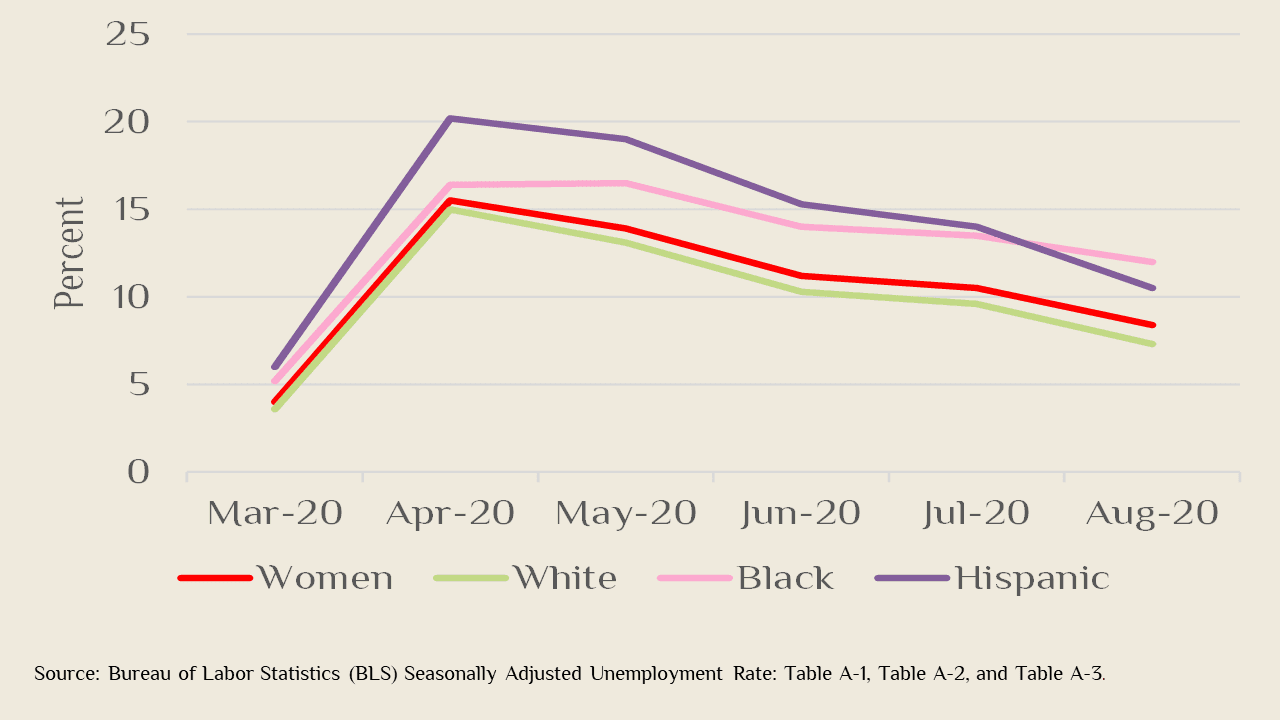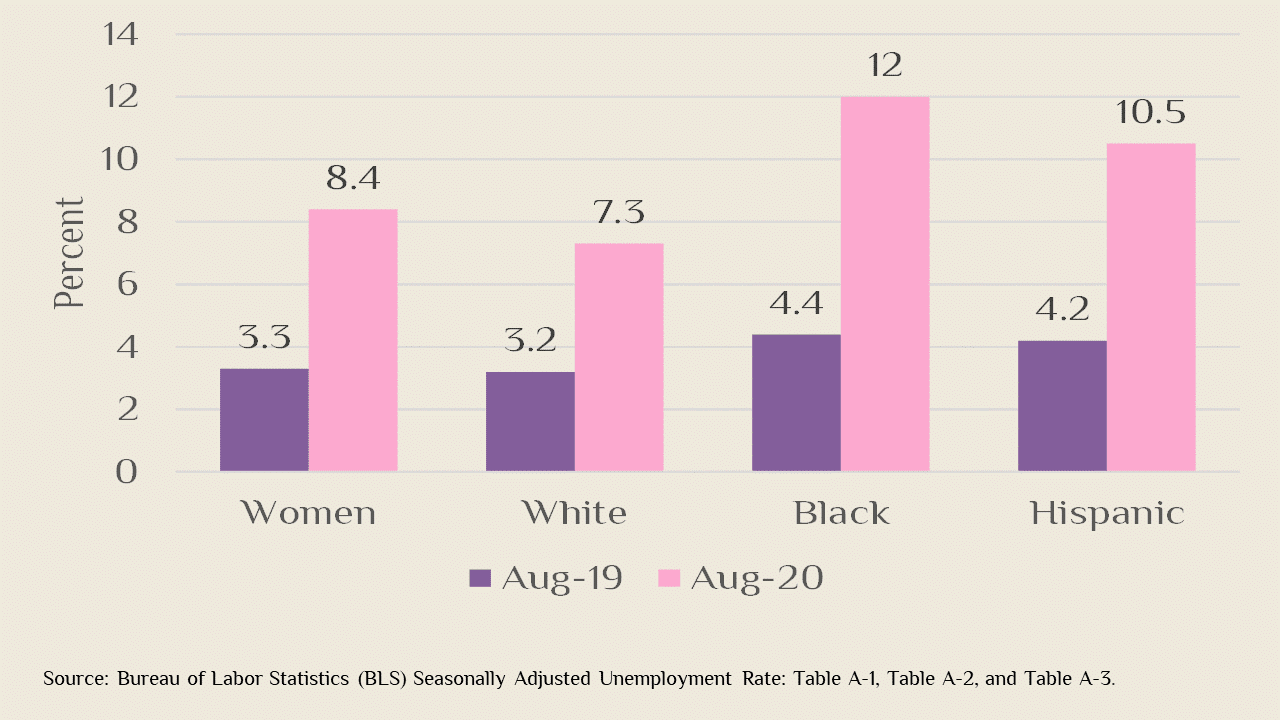We are nine months into the COVID-19 pandemic, and today was the first day that I felt a sense of despair. This morning, I told my students it really feels like “Hump Day.” I suspect some of the gloom I feel stems from the presidential debate, some from the anticipation of the unemployment numbers to be released on Friday, October 2. I am mostly saddened about the lack of policy conversations to provide relief to the millions impacted by COVID-19.
On Friday, when the Bureau of Labor Statistics releases the monthly “Employment Situation,” I’ll be looking to see if the unemployment rate for women continues to decrease. In graph 1, the unemployment gap between Black and White women has been widening, and the unemployment rate for Hispanic women has decreased faster than for Black women. I’ll be looking to see if these trends continue.
Graph 1. Unemployment Rates for Women: March 2020 to August 2020
The disparate impact of the coronavirus pandemic can be seen in the widening of the employment gap between women and comparing the unemployment rates for 2019 to 2020. In graph 2, the unemployment rate for August 2020 was more than twice the unemployment rate for August 2019. In 2019, the unemployment gap between women was just over 1 percentage point. The unemployment gap between women for August 2020 was between 3 to 5 percentage points.
Graph 2. Comparison of Unemployment Rates August 2019 vs. 2020
While we know that all women are vulnerable to job loss during an economic downturn, these graphs reinforce that Black and Hispanic women are amongst the most vulnerable. It is important to remember that Black and Hispanic women’s labor market experiences during the pandemic are a magnification of their experience during “normal” times.
The data do not allow for comparison for Asian or Indigenous women. When I tweet about the unemployment data on Friday, I’ll continue to tweet at the Bureau of Labor Statistics, asking them to disaggregate the Asian data by sex and to report data for Indigenous Americans.
You can follow us on Twitter at @WISERPolicy.
Be Well,
Rhonda


